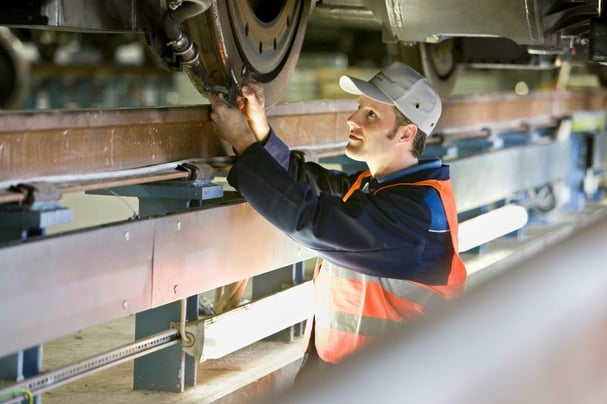One of my favorite movies of all time included a man who dedicated his life to the study of fencing so that one day he could approach a man who had six fingers on his right and say, “Hello, my name is Inigo Montoya. You killed my father. Prepare to die.”
Now, I’ve never known a man with six fingers just on his right hand. I did, however, know a guy who had six fingers on bothhands… and they all worked! I met the man while working in Brazil and after shaking the man’s hand, I said to a co-worker, “That guy has got to have the biggest hand I’ve even shook.”
With a smirking look on his face, my co-worker friend revealed to me, “You know the guy is packing six fingers, don’t you?”
With a look of astonishment at this new revelation, I approached the man again and basically demanded to see his hand – I didn’t want to see his hands – I had to see his hands. Not only did he show me his right hand, but he also showed me his left – verifying the truth – that he indeed had six fingers on each hand.

Since that experience, I have often wondered what kind of pianist or guitarist that person might have made. I find it hard enough to play the piano with ten fingers, let alone having an extra two. But what about those that have lost fingers while at work due to accidents with poorly guarded machinery? I couldn’t imagine learning to play an instrument proficiently that required all of my digits, only to later experience an accident that removed my future ability to perform.
My associates in the Environmental Health & Safety (EHS) space love to tell me their horror stories of severed fingers, blindness, crushed hands and arms, and other accidents as a way to illustrate the potential severity of machinery accidents in the workplace. In most cases, harmful events such as these can be avoided in the workplace when companies put into place a formal EHS program with a leader who understands the benefits of such an investment.
According to OSHA’s top 10 most frequently cited violations for fiscal year 2014, Machine Guarding was number 6 in terms of ‘serious’ violations, or ones in which there is a substantial probability that death or serious physical harm could result and the employer knew or should have known of the hazard.
Even more disturbing of a trend, machine guarding was also number 4 in total ‘willful’ violations, or ones committed with an intentional disregard of or plain indifference to the requirements of the Occupational Safety and Health Act and requirements.
Accident Prevention Saves Money!
No matter what type of investor you might be, if you’re earning a 1:3 return ratio on your investments, you’re doing pretty well. However, OSHA’s office of Regulatory Affairs provides even more encouraging results, suggestingsavings of $4 to $6 for every $1 invested. That’s a ~600% return on investment (ROI)! I’m not aware of any CFO that wouldn’t jump at an ROI like that.
Additionally, 95% of all executives polled believe workplace safety has a positive impact on a company’s financial performance. Unfortunately, investments like safety investments are usually made reactively and never really prequalified without a company first having an accident. However, at that point, it’s too late.
Let’s consider first the negative effects of having an employee injured on the job. There are direct costs, such as medical expenses and worker compensation paid to the injured worker. There are also indirect costs that are paid in the form of lost production and productivity, OSHA fines, damaged goods and equipment, additional safety training needed, and higher insurance and workers compensation rates.
The same poll as before revealed that 40% of executives also reported that for every $1 spent on the direct costs, an additional $3 to $5 was generated on indirect costs. In essence, think of an accident with direct medical and workers comp payments of $20,000 and will likely cost between $60,000 and $100,000 more in indirect costs. Now here is the kicker. Indirect costs – which make-up the largest part of any accident’s expense – are not covered by insurance; they come off a company’s bottom line.
Risk Assessments: Make it mandatory for prevention
“The best defense, is never to offend.”
I always thought to myself what a brilliantly simple advertising tagline with such philosophical truth to it. Let’s see if I can interpret it’s meaning to suit this article. The best way to avoid an accident is to prevent one, and one of the best ways to help prevent an accident is to perform risk assessments on your manually operated, automated, or robotic machinery. Don’t chance it.
The cost of an accident will undoubtedly teach a hard lesson – one that can be prevented.
For more information on our Machinery Functional Safety solutions, please visit our website or contact us to speak to one of our experts.
Peter Grundberg is a strategic commercial executive, brand builder, and growth architect for industrial equipment / machinery manufacturers, and product testing / verification laboratories that operate in the Industrial markets of Power Generation, Control & Automation, Renewable Energy, Oil & Gas, Transportation, Mining & Construction, Heavy Industrial, and Hazardous Locations. For more than 15 years, Peter has been actively involved with product manufacturing and conformity assessment services, expanding business and helping companies manage their risk as it relates to their new product development.




